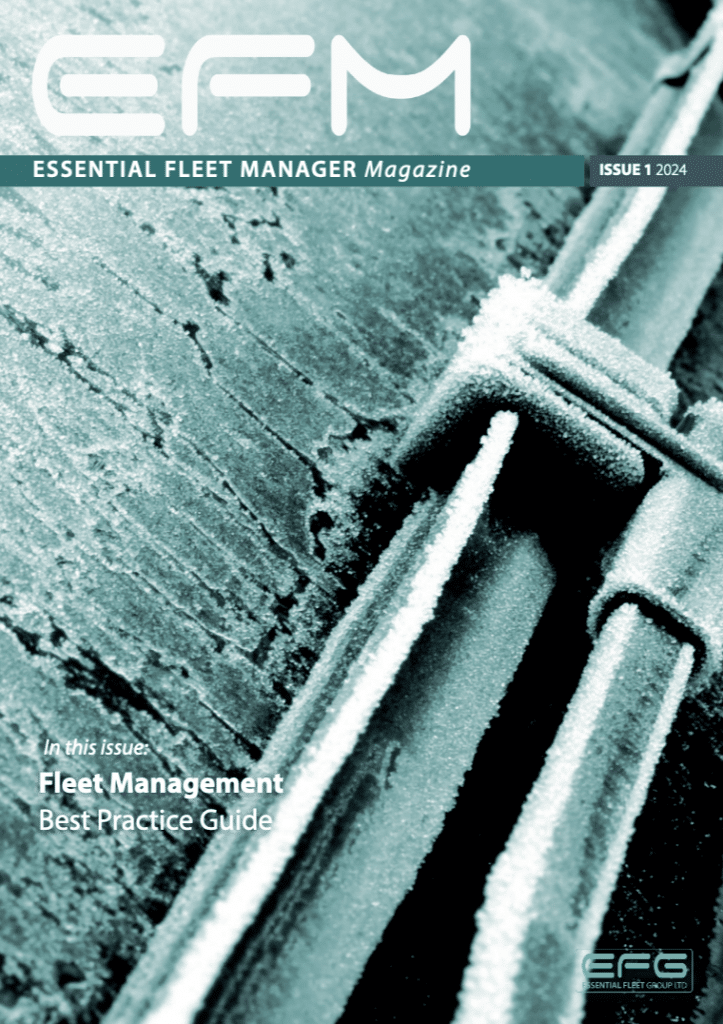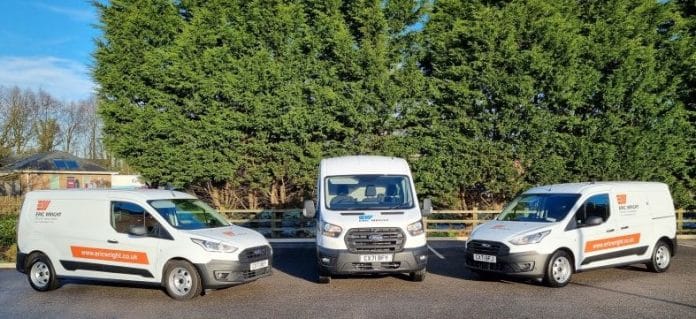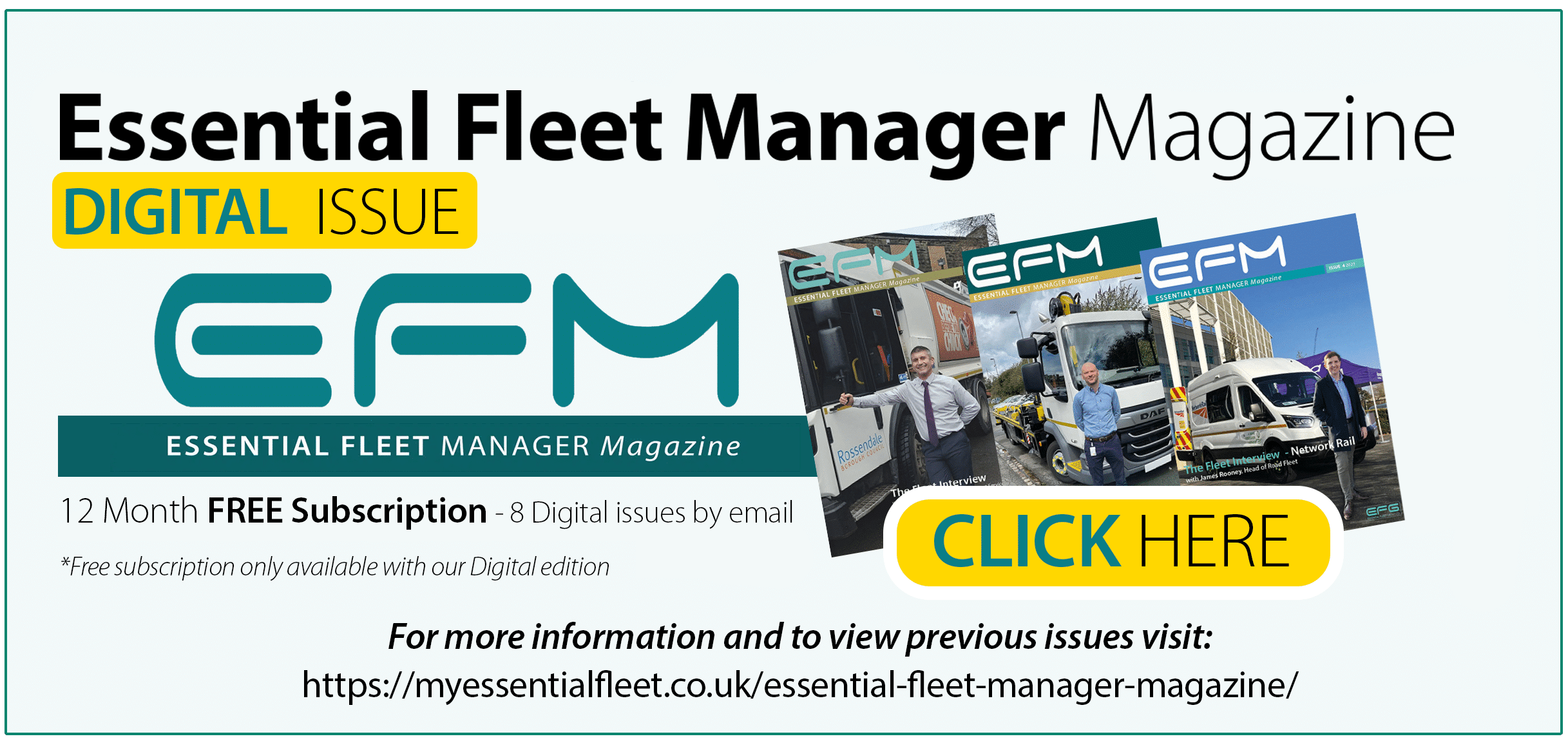With Steve Openshaw, Group Fleet and Transport Manager
Introduction
With origins as far back as the 1920s, Eric Wright Group works across the public and private sectors, leading projects in construction, civil engineering, utilities and infrastructure. The work carried out will often result in environmental and social improvements, but in the lead-up to project completion, organisations must ensure that operations are as efficient and environmentally responsible as possible.
In practice, this means a commitment to minimising waste protecting biodiversity across all project sites and mitigating any negative impacts. It also means that with a CNZ target of 2030, Eric Wright Group is taking huge steps towards significantly reducing emissions from the essential fleet operations that are integral to their work.
In charge of the fleet is Steve Openshaw, Group Fleet and Transport Manager, who talked to Essential Fleet Manager Magazine, not only about the longer-term strategy of decarbonisation but also about the day-to-day challenges of operating a diverse fleet and implementing change.
Interview
What is the current breakdown of all your fleet assets?
The current fleet is 498 in total, with 354 cars and 144 commercial vehicles.
As someone who adopted their first Electric Vehicle (EV) in 2013, you can be considered something of a pioneer! How has the company car fleet at Eric Wright evolved since 2020 and transitioned towards EVs?
In 2020, I had the only EVs on the fleet, with around 10 PHEVs added since then. The percentage of EV company cars has risen to 73% pure EV and 91% ULEV compliant.
What steps have you taken to ensure the availability of infrastructure to support the EVs and how do you manage the costs of charging?
In 2022 we increased the EV charge points at our head office from 4 sockets to 20 enabling staff to charge at work, this has made it easier for staff with no home charging to be able to charge at work, making it easier to switch to an EV.
Where practicable, we have also installed charge points at our regional offices and our construction site. We have partnered with a major provider to manage the cost charged to staff making it a simple process to manage.
There are, as you mentioned, challenges at present to electrifying your commercial vehicle fleet. What are those challenges and how will you be meeting them?
As we don’t have a return-to-depot commercial fleet, the main issue is charge point availability close to where the drivers live. This is having the biggest impact on commercial EV adoption. We are working with our clients to install charge points to enable the deployment of commercial EVs when practicable.
How much assistance can organisations such as the Association of Fleet Professionals (AFP) be in lobbying the government to promote change that meets the needs of fleet operators? How much more can the government do?
Organisations like the AFP are crucial to lobbying the government and other bodies on the challenges Fleets face in the Zero-emission transport space. The collective value of professional bodies is vital in the provision of information to the government.
In your view, what are the major considerations when decisions are made in providing infrastructure for EVs?
Collaboration, information, partnerships and more collaboration. You need to involve as many stakeholders as possible, be well informed with data on journeys, frequency of use and most of all, driver engagement. Drivers have a wealth of practical experience and information on how your fleet operates, without drivers on board, it will never work.
With a fleet of commercial vehicles that are not returned to depots, what are the vehicle security concerns involved and how do you address them?
We have a number of security options for different workstreams, both physical and electronic, which as you will understand, I cannot elaborate on further.
Although all your drivers “drive for work”, they are not professional drivers. How do you manage driver risk in this environment?
We have an in-depth driver induction, including familiarisation with vehicles, online assessments, practical driver assessment, EV driving and ongoing information rollouts via toolbox talks and driver briefings. The fleet team are also invited to stand down days to discuss current issues and highlight best practices with our fleet drivers.
How is vehicle risk managed alongside that of the drivers?
Managing vehicle risk alongside that of drivers involves implementing comprehensive strategies to minimize potential dangers associated with both the vehicles and the individuals operating them. Key elements of this risk management approach include:
– Driver Training and Education
– Regular Vehicle Maintenance
– Telematics and Technology
– Driver Monitoring and Feedback
– Enforcement of Safety Policies
– Risk Assessment and Analysis
– Regulatory Compliance
– Emergency Response Planning
Are there additional challenges when managing risk when vehicles are on short or medium-term hire?
Short to medium-term hire vehicles have the same risk to be managed as our longer-term vehicles.
How do technology and data-led systems assist with all your risk management and compliance responsibilities?
Technology and data-led systems play a crucial role in enhancing risk management and compliance responsibilities in various ways. There are some key ways in which technology and data-driven approaches contribute to these efforts such as Journey tracking, driver behaviour, route optimisation and automated record keeping.
By leveraging technology and data-driven systems, organisations can not only enhance their ability to manage risks and ensure compliance but also foster a culture of continuous improvement and adaptability in response to changing conditions and regulations.
How do you think you will be able to accurately describe your fleet in five years?
Simply ‘different’ development is running so fast that you need a dedicated professional manager to guide a company on this exciting journey.
As featured in Issue 1(2024) – Essential Fleet Manager – click here to read





